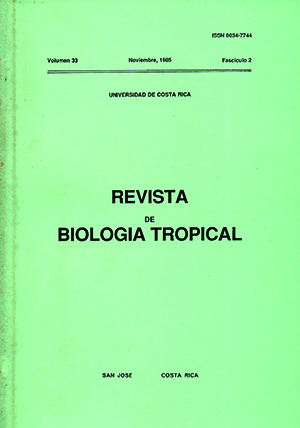Abstract
Datos morfométricos de una hembra de Harriotta raleighana capturada en el Golfo de California respaldan la idea de que la especie -para especímenes dentro de cierto ámbito de longitud de cuerpo representa dimorfismo sexual y alometría negativa en la longitud del hocico. Se describen las marcas presentes en el cuerpo del especimen que se supone fueron causadas durante la copulación.References
Dean, B. 1906. Chimaeroid fishes and their development. Carnegie Inst. Wash. Publ. 32, 172 p.
Eschmeyer, W.N., E.S. Herald, & H. Hammann. 1983. A field guide to Pacific Coast Fishes of North America from the Gulf of Alaska to Baja California. The Peterson field guide series No. 28. Houghton Mifflin, Boston. 336 p.
Garrick, J.A.F. 1971. Harriotta raleighana, a long-nosed chimaera (Family Rhinochimaeridae), in New Zealand waters. J. Roy. Soc. New Zealand, 1: 203-213.
Garrick, J.A.F., & T. Inada. 1975. Dimensions of Long-nosed chimaera Harriotta raleighana from New Zealand. J. Mar. Freshw. Res., 9: 159-167.
Goodc, G.B., & T.H. Bean. 1895. Scientific results of explorations by the U.S. Fish Commission Steamer "Albatross". No. XXX. On Harriotta, a new type of chimaeroid fish [rom the deeper waters of the northwestern Atlantic. Proc. U.S. Natl. Mus., 17: 471-473.
Townsend, C. H., & J. T. Nichols. 1925. Deep sea fishes of the "Albatross" Lower California expedition. Bull. Amer. Mus. Nat. Hist., 52: 1-20.
##plugins.facebook.comentarios##

This work is licensed under a Creative Commons Attribution 4.0 International License.
Copyright (c) 1985 Revista de Biología Tropical


